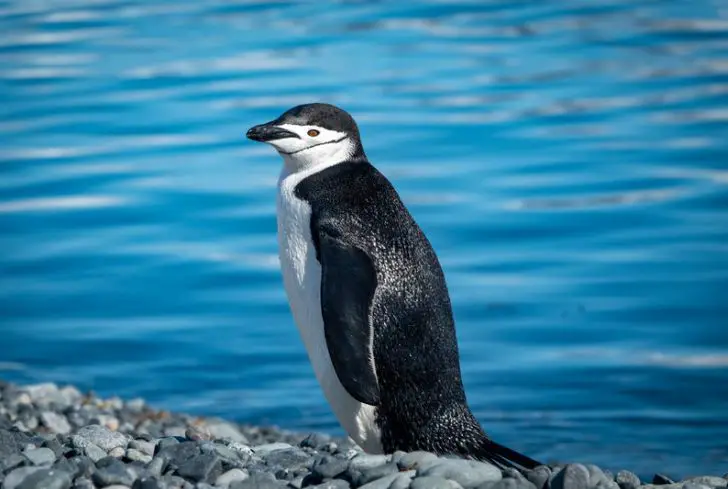Found in the Southern Hemisphere, particularly the colder regions of South America, Africa, and Antarctica, penguins are fascinating birds known for their unique appearance and behavior. These birds are available in about 19 species, each with a unique size and color.
Despite their diverse sizes and locations, all penguins share specific characteristics, including their tuxedo-like feathers and inability to fly. However, do penguins have tails? This is one of the commonly asked questions that still need to be answered.
This post will answer the question do penguins have tails alongside other fascinating information you need to know about these creatures. Dig in!
Read: Do Tigers Hibernate or Migrate in Winter?
Contents
Do Penguins Have Tails?
Yes, penguins do have tails in the traditional sense. In comparison, most birds have a long, thin tail that sticks out from the back of their body, which they use for balance and maneuverability. However, penguins do not have this type of tail. Their tail is short and is typically wedge-shaped with 14 to 18 stiff tail feathers.
Instead, penguins only have a thin, pointed tail that tapers off from the back of their body. Overall, the penguin’s tail is negligible as it does not resemble other birds`. Besides, the fact that the penguins do not fly explains the uniqueness of their tails compared to other birds. They live both in water and on land.
What Does a Penguin’s Tail Look Like?
Penguins have thin, pointed tails that taper off from the back of their body. This tail is usually about the same length as the rest of the penguin’s body, depending on the species. It contains a series of vertebrae connected by small muscles and tendons, which allow the penguin to move its tail from side to side.
The feathers on a penguin’s tail are shorter and less dense than on other parts of its body. They help to insulate the penguin’s body and keep it warm in cold water. When viewed from behind, a penguin’s tail appears as a thin, pointed extension of its body, with feathers covering the surface.

What Do Penguins Use Their Tails For?
Penguins use their tails for balance when swimming through the water and standing upright on land. When a penguin wants to swim in a particular direction, it will use its tail to steer itself in that direction. This allows it to navigate the water and land with greater control and precision.
This is especially important for giant penguins, weighing up to 90 pounds. Without a tail to help balance their body, these penguins would have difficulty standing upright on land. Besides, penguins do not use their tails in the same way that other birds do.
For instance, they do not use their tails to help them fly or to catch insects. Instead, their tails are explicitly adapted for swimming and balancing on land.
Why Do Penguins Shake Their Tails?
Penguins are known for shaking their tails from side to side when standing on land. They shake their tails as a way of communicating with each other. Also, to shake off any excess water on their feathers.
When a penguin shakes its tail, it is usually a sign of feeling threatened or anxious. This behavior is often seen in penguins when predators such as seals or seagulls are approaching. Besides, penguins may be trying to communicate to these predators that they are aware of their presence and are prepared to defend themselves by shaking their tails.
Penguins also shake their tails to remove any water on their feathers. The wet feathers can weigh a penguin down and make it more difficult for them to swim. So penguins can remove any excess water by shaking their tails and ensuring that their feathers are as dry and lightweight as possible.
How Do Penguins Use Their Tails?
Penguins use their tails as a rudder to help them swim through the water balance when standing upright on land. However, they do not use their tails in the same way that other birds do.
For instance, they do not use their tails to help them fly or to catch insects. Instead, their tails are explicitly adapted for swimming and balancing on land.
To use their tails as a rudder, penguins will move their tails from side to side to steer themselves in the desired direction. This allows them to navigate through the water with greater control and precision.
Besides tilting their tails slightly to one side or the other, they can adjust their center of gravity and maintain their balance. Thus, this tail feature is helpful in penguins as it enables them to moderate their body movement.
Read: Do Wolves Eat Deer?
Do Penguins Have Ankles?
Yes, penguins do have ankles. However, they do not resemble the ankles of other birds. Most birds have thin, flexible ankles that allow them to move their feet and toes in various ways. However, penguins’ ankles are much thicker and more rigid.
Penguins need strong ankles to support their weight when standing upright on land. These creatures have a unique body structure adapted for life in the water. Unlike other birds, their legs are shorter and thicker, and they have feet webbed feet that resemble duck feet.
This allows them to swim through the water and catch their prey easily. However, it also means that penguins are less agile on land than other birds. Their thick ankles and webbed feet make it more difficult for them to move around on land, so they must rely on their tails to help them balance.

Do Penguins Have Blubber?
Yes, penguins do have blubber. Blubber is a layer of fat found beneath the skin of many marine animals, including whales, dolphins, and seals. In penguins, fat helps to insulate their bodies and keep them warm in cold water.
Penguins have thick, waterproof feathers and blubber for insulation. Their fat is made of specialized cells called adipocytes. The adipocytes store energy when food is scarce or needs to stay warm in cold water. Also, this helps them during cold seasons when they cannot be able to fly and search for food.
Do Penguins Have Fur?
No, penguins do not have fur. Like most birds, feathers cover penguins` bodies. These feathers help them regulate their body temperature and protect their skin from the elements.
Penguins have a unique feather called a down feather, which is underneath their outer feathers. These feathers are soft and fluffy, and they help to insulate the penguin’s body by trapping air against its skin. The feathers help to keep the penguin warm even in the coldest water.
Do Penguins Have Webbed Feet?
Yes, penguins have webbed feet. Their feet are so webbed that they are often mistaken for flippers. The webbing on a penguin’s feet helps them swim through the water quickly and catch their prey.
They have shorter, thicker legs and webbed feet. However, this makes them less agile on land, and they rely on their tails for balance. The webbing on their feet increases surface area and reduces drag for efficient swimming.
Read: Will Coyotes Attack Horses?
Summary
Penguins do not have tails in the typical sense. However, they have a thin, pointed tail that serves as a rudder to help them swim through the water. They also use their tails to help them balance when they are standing upright on land.
In addition to their tails, penguins have many other adaptations that help them thrive in the Southern Hemisphere’s cold waters, including thick feathers, blubber, and webbed feet. These adaptations allow these creatures to survive and thrive in their unique environments and make them fascinating birds to watch fly in the sky.







